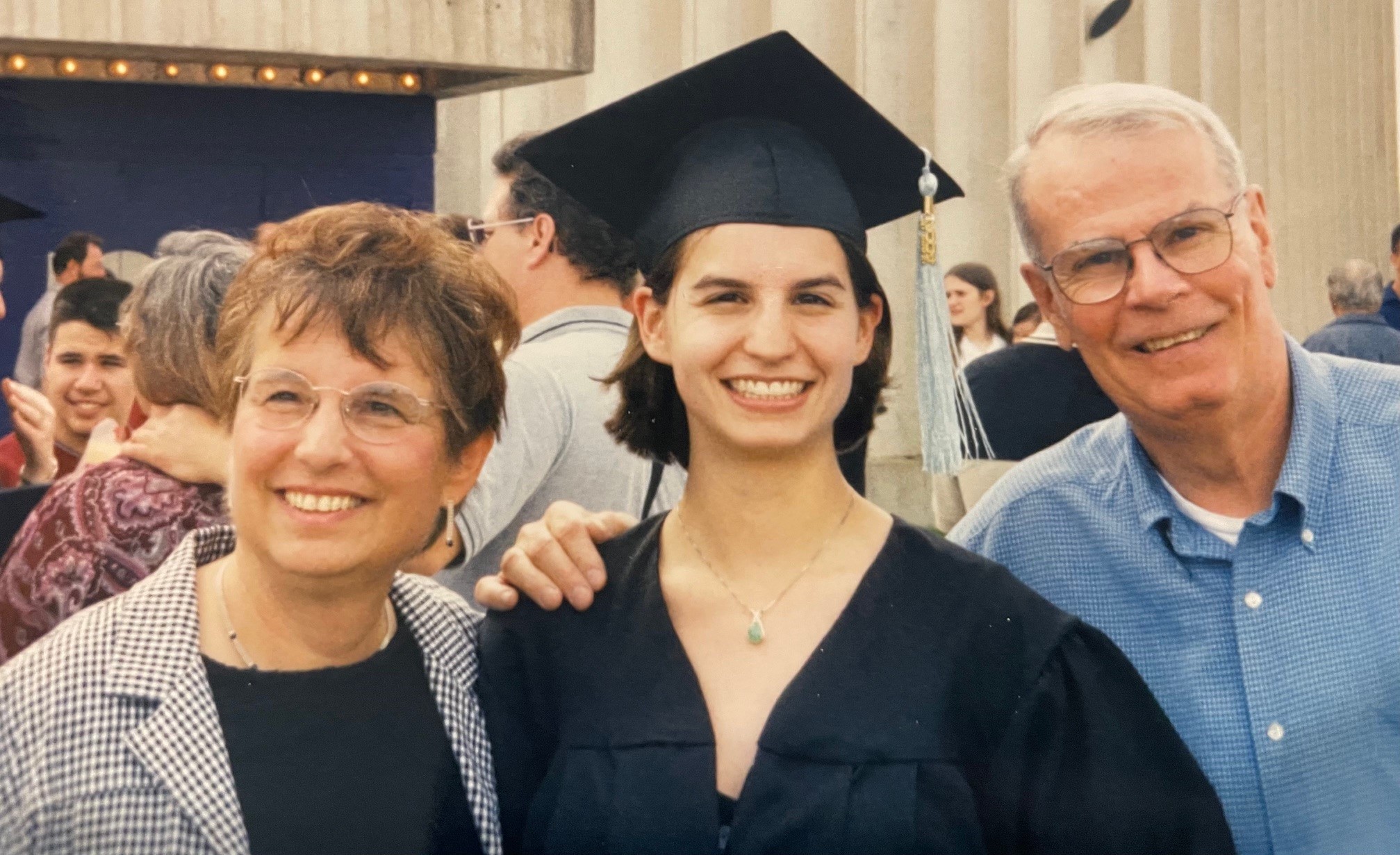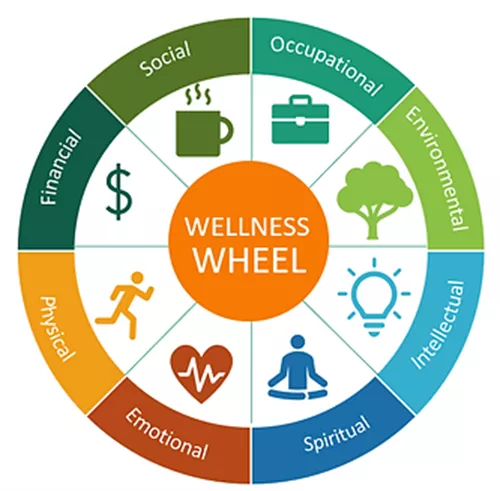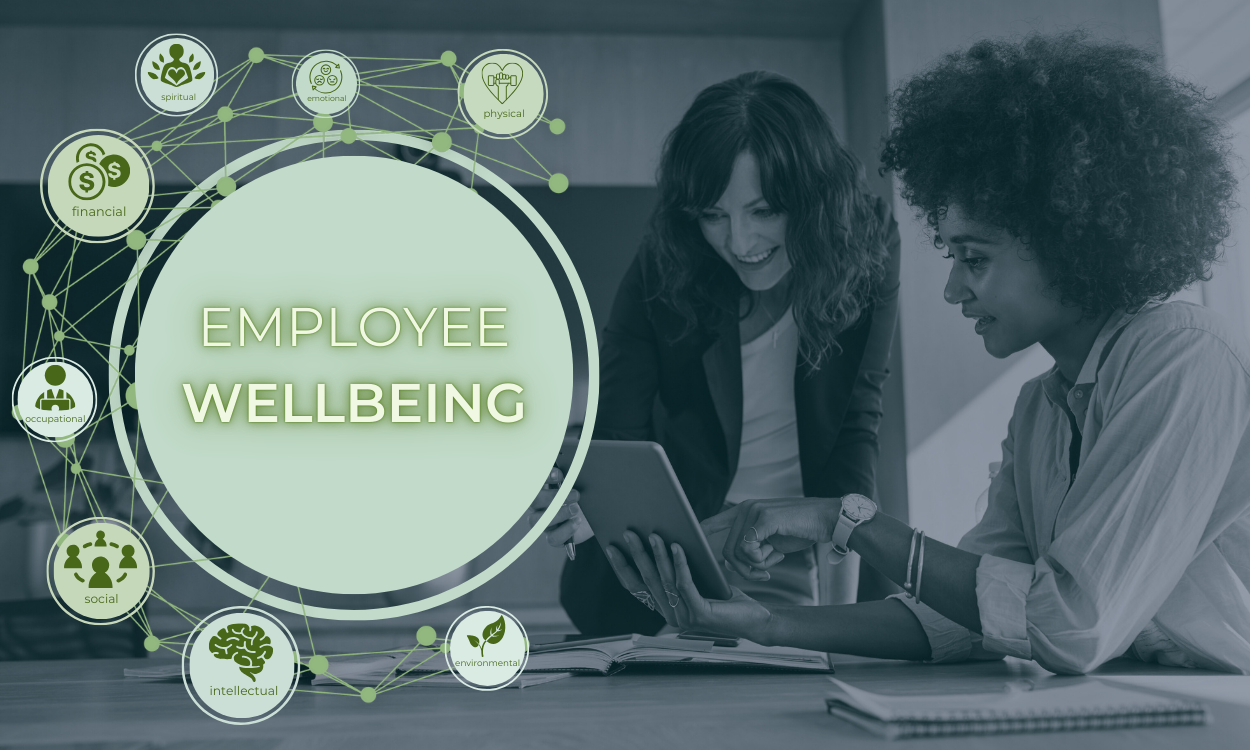The year was 1999. President Clinton’s impeachment trial dominated headlines, the tragic shooting at Columbine High School shook the nation, and anxiety over the turn of the century—Y2K—loomed large. Amidst these monumental events, I received my acceptance letter to the University of Northern Iowa. The following fall I enrolled, majoring in Health Promotion with an emphasis in workplace wellness.

Posing with my parents during UNI’s graduation ceremony.
Like most teenagers making this life transition, I was peppered with questions from caring adults who were excited about my future. Most of the inquiries swirled around what it meant to be a wellness professional and what type of work I might find upon graduation. I usually fumbled through my response until landing on an answer that sounded convincing and satisfied their curiosities. But honestly, I was crossing my fingers that my interest in helping people lead healthier lives would align with a job opportunity four years later.
Corporate wellness programs were relatively new in 1999
This field of study and career path was relatively new when I started my undergraduate journey which is why there were so many questions. In the late 1970s, Johnson & Johnson’s Live for Life program became the prototype for other corporate wellness programs and focused on three areas: weight control, nutrition, and stress management. By the 1980s, workplace wellness programs started appearing in academic literature as a way to reduce chronic health issues like heart disease and diabetes.
Physical health was the primary emphasis
When I began my studies in the fall of 2000, the field was very one-dimensional. Physical health was the primary emphasis, and the programs developed in my coursework focused tobacco cessation, pedometer campaigns (yes, I am dating myself), and weight loss challenges. I was introduced to the “wellness wheel,” a graphic depicting the various components of wellbeing, but there was not much emphasis around the other dimensions during my time in college.

An example of the “Wellness Wheel.”
Today's wellness programs extend beyond physical health
Today, it is widely known that wellbeing extends beyond physical health. Reflecting on this nearly 25 years after I walked into my first class at UNI, I am encouraged to see how workplace wellness programming has evolved. Today, our understanding of wellness has expanded to include financial, social, environmental, spiritual, intellectual, occupational, and mental wellbeing.
Missing wellness dimensions = missed opportunities
If today’s workplace wellness programs are not planned with all dimensions in mind, we risk missing opportunities to reach employees where they are in their personal wellbeing journey. This oversight can lead to a narrow understanding of wellness benefits, discourage those uninterested in physical activities, and result in lopsided programming that garners minimal participation.
Early EAPs were focused on substance use
Just as wellness programming initially took a one-dimensional approach, so did Employee Assistance Programs, or EAPs. In the late 1930s, EAP benefits were established to help employees grappling with alcohol addiction find treatment and recovery to maintain employment.
Today's EAPs are multi-dimensional
Today, a full-service EAP addresses multiple dimensions of wellbeing. Its purpose? To help employees and their family members manage life’s challenges through easy-to-access confidential support and resources. If anything stands in the way of an employee thriving at work, the EAP is here to help.
Public perception hasn't caught up with the evolution of EAP and wellness benefits
As workplace wellness programs and EAPs continue to expand their offerings, they should be viewed through the same lens: employee wellbeing benefits. Together, they complement each other with a shared purpose— to help employees become the best versions of themselves by providing valuable support, resources, and encouragement.
Like wellness benefits, EAP is a tool for greater employee wellbeing
Many employers view an EAP as a “check the box” benefit—a set-it-and-forget-it item rarely revisited beyond onboarding or open enrollment. However, employee benefits are only valuable if they are used.
I encourage you to check the box and think outside it by promoting and leveraging EAP as a tool for greater employee wellbeing. Get your team excited about their EAP benefits the same way you do a wellness program. Highlight how an EAP can support team members and their families to reach their full potential, just as you would showcase a wellness champion in your workplace. Normalize using an EAP benefit as routinely and readily as you would encourage participation in a monthly wellness challenge.
EAP and wellness programs are complementary parts of an employee wellbeing strategy
An EAP is fundamentally a wellness benefit, and integrating it fully into your wellness programs boosts its visibility and effectiveness. Start treating them as complementary parts of a cohesive approach to employee wellbeing, rather than presenting them as separate initiatives.
10 ways to incorporate your EAP benefits into your wellbeing strategy:
Times change, but the need for robust employee wellbeing benefits doesn't
Fast forward to 2025: we’re experiencing political turmoil, heightened concerns over school violence, and a rapidly changing world that mirrors the uncertainty and anxiety of the Y2K era. Employees today face a landscape of growing challenges, and the significance of a robust wellness program integrated with a full-service EAP cannot be overstated. By combining these tools, you can provide meaningful support that empowers your team to navigate uncertainty and build resilience for the future.
EFR is here to help cultivate employee wellbeing
At EFR, we help people manage life’s challenges and reach their full potential through our behavioral health programs including our flagship EAP and integrated Wellness Benefits. As pioneers in employee wellbeing—both nationally and in Iowa—we partner with workplaces to enhance productivity, engagement, and wellbeing.
Interested in transforming your workplace into a human-centric environment that benefits both people and your bottom line? Connect with us at [email protected] or explore our EAP and Wellness benefits here.


